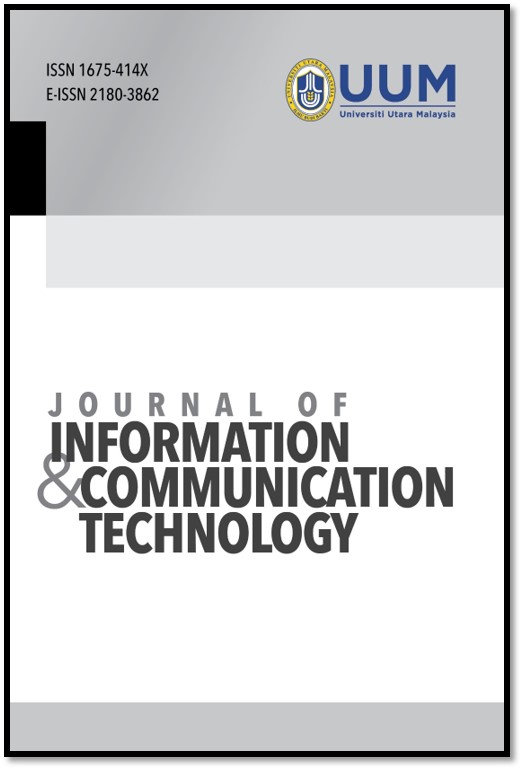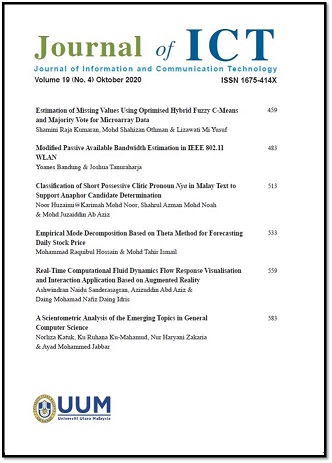2021 - present 2002 - 2020
2002 - 2020
|
|||||||||||||
2021 - present 2002 - 2020
2002 - 2020
|
|||||||||||||
| Publisher | UUM PRESS |
| ISSN | 1675-414X |
| eISSN | 2180-3862 |
| Established | 2001 |
| DOI | 10.32890/jict |
| Publishing Frequency | Quarterly (January, April, July and October) |
UUM Press
Universiti Utara Malaysia, 06010 UUM Sintok
Kedah Darul Aman, Malaysia
Phone: +604-928 4816, Fax : +604-928 4792
All articles published in Journal of Information and Communication Technology (JICT) are licensed under a Creative Commons Attribution 4.0 International License.
